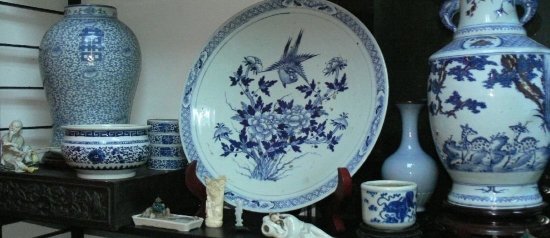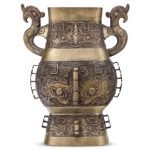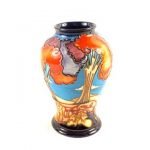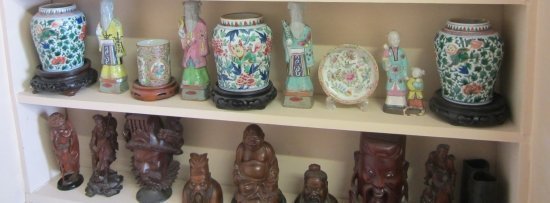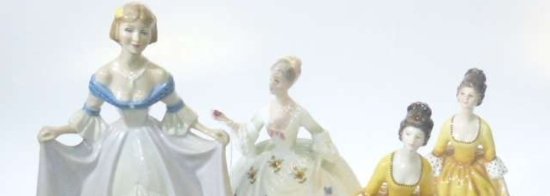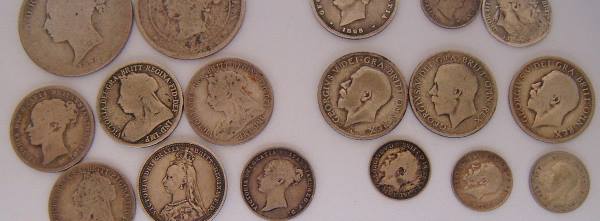China, with all its history, its varied nationalities and even more varied landscape, for thousands of years has been a source of fascination to westerners. In that one country, one can pass from tropical jungles in the south to icy steppes in the far north, endless dusty hills in the centre and the deserts of the far west. One can even find oneself in a country within a country, one whose manners, customs and religion bear no resemblance to those in the land of the Han Chinese.
I’m talking about Tibet, of course, and the adjacent areas that once formed Tibet’s eastern regions. It draws me back time after time, and last April I found myself on another bumpy ride through one of China’s ubiquitous springtime dust storms to Lanzhou, the capital of Gansu Province.
One of China’s poorest provinces, for hundreds of years Gansu has been home to a large population of ethnic Hui people (the Muslims of China), Han people and Mongolian people, as well as Tibetans, and within its borders the Tibetan Autonomous Region begins in a little spur to the southwest. This spur is claimed by both Qinghai and Gansu–and it was one object of my travels, for here lies one of the six great Tibetan monasteries still extant, Labrang (Labulang in Chinese).
Gansu is the site of the discoveries which revealed the terracotta remains of a civilisation dating back to around 4800 BC, the Gansu Yangshao culture. The world famous Silk Route passes through it; and the province boasts the great Binglingsi, Mogao and Dunhuang caves, Buddhist sites of outstanding significance. But even in the best of times, Gansu and its capital Lanzhou lie in an area possibly more famous for its dust than its heritage sites.
With an interpreter-guide and driver, I set off through the Muslim-occupied lowlands to Xiahe, home of the ancient Labrang Monastery. The road was appalling; like everywhere in China, a new one is under construction. That meant at the end of the winter and before the real snowmelt set in, grading had taken place but not resurfacing. During the first gruelling five hours we left the main road and crawled through such precariously perched ridgetop villages that in one, I feared for the life of a small child we saw playing, semi-naked, in the dust at the side of the road–a small step forward would have sent him tumbling down a steep, rock-strewn drop to certain death.
Long after dark, with three of us huddled in our small van numb with fatigue, we struck the last, smoothly-graded stretch towards Xiahe. What joy! At last, the driver was able to accelerate modestly, but just as we gathered momentum, we saw in the headlights a shallow concrete drain right across the road, protruding about 15cm. On went the brakes and we crept gingerly over the bump, which was clearly designed to drain away the snowmelt after the road’s completion. Alas, these drains occurred every mile, so another dreary hour and a half later we passed through Xiahe, nearly nine hours after leaving Lanzhou.
‘Have we missed the town, are we lost?’ I asked with memories of my last visit to Labrang leaping to mind. ‘No, it’s just a short way’ said my guide–and sure enough, the headlights soon illuminated a compound of some sort–factory, prison, who knew?
At 10.30 pm in countryside China, we had to rouse the hotel staff who engaged sleepily in argument with my guide. ‘What’s wrong?’ I asked. ‘Nothing’, she replied ‘I want them to put you in the special room.’ ‘I don’t care about a special room,’ I wailed, ‘I just want to sleep!’
We left the warmth of the building and plunged across an inky black courtyard and headed for some hills I could see silhouetted in the starry night. Five hundred metres or so later she stopped in front of a blackened cabin, and retreated.
The cabin turned out to be rather luxuriously appointed for a place in the middle of nowhere, with vaulted silk brocade walls and ceilings. Next day, in the brilliant sunshine I was able to admire how it was charmingly painted to simulate a Tibetan picnic tent. That morning we walked about the grounds and buildings of Labrang Monastery.
Tibetan architecture has an austere, grand, horizontal solidity. It is not part of the earth in the manner of the cave dwellings we’d passed in the loess hills, but it does not disturb the harmony of the landscape from which it springs. The upper walls of the exterior are stained a dark chocolate brown, almost black, dotted with creamy ‘pearls’ and enlivened with areas of an earthy, ochre red to match the lower walls. Above, Labrang’s characteristic golden pagoda-style roofs curve gently skywards, topped by Buddhist symbols that announce its presence to approaching devotees.
The founding of Labrang Monastery at Xiahe in the Sangchu Valley was planned to coincide with the 300th anniversary of the founding of Ganden Monastery in Central Tibet. Initially, it was merely a large tent pitched on the site where the main assembly hall was built in 1711. The first community of monks numbered only five, but over the succeeding years more than 100 buildings were erected at Labrang, with a population which fluctuated between 3,000-5,000. Eventually, Labrang would boast six sutra halls for the reading of the scriptures, 48 temples, 31 palaces for the hereditary political and religious leaders and senior Lamas, a further 30 for the Rinpoches or incarnate Lamas, eight government buildings, its own printing house, numerous meeting halls, six kitchens, 500 monk’s cells and 500 prayer wheel rooms.
Labrang was modelled along the lines of the early Indian Buddhist monasteries and specialised in the study and practice of Buddhist sutras and tantras, and the entire range of associated meditations, medicine, arts, astrology and humanities. Although Labrang was conceived as Gelugpa (Yellow Hat) after the Central Tibetan tradition, it also housed practitioners who specialised in the ancient Nyingma practice, so to protect it from favouring one school of thought, the position of Abbot was rotated.
In the past, in addition to its educational and spiritual role, at least seven major festivals were held at the monastery annually, and for these thousands of Tibetan nomads would come to Xiahe, camping on the banks of the river. Labrang was the path by which Tibetan Buddhism reached Mongolia and even Russia. Labrang maintained strong links to its Tibetan parent in Lhasa; and maintained a harmonious balance within the community of mainly Chinese and ethnic Muslims within which it found itself.
That afternoon, we left Xiahe on one of the most extraordinary trips of my experience. Ascending into the hills behind Labrang on a dusty road in the first weeks of Spring, we drove into the teeth of a blinding dust storm, for which the region is famous. The road climbed through a long gradient in sparse, open countryside and from the relative comfort of our little van, we wouldn’t have known that it was freezing outside except for the streams which were frozen solid.
Herds of long horned Tibetan sheep huddled for shelter from the billowing dust in a ditch at the side of the road, as did a lone autumn-hued golden pheasant. From time to time we could just see small herds of yak bunched together, heads down to protect their eyes from the gritty wind. Almost no human life was evident in that bleak region. Farther along we passed a few houses with cattle tied against mud walls and in one area, a multitude of meditation huts scattered in the lee of the hills told us we were near a monastery.
Leaving the dusty plateau we started our descent, and here the landscape changed dramatically. Suddenly we were among steep-sided mountains forested with fragrant juniper and fir trees. Here we waved to gaily-clad Tibetans, their donkeys laden with baskets of juniper branches heading home, with a light sprinkling of snow starting to fall. The lowering skies over dark-treed slopes; ever-present rock falls and steep drops toward stony riverbeds explained the fluttering prayer flags with their pleas to the gods for the safety of travellers through this region.
Descending still further, we looped through bald, red mountains of dramatic rounded form until we reached a lowland, its gentle rises and falls dotted with mud-walled villages, their drab appearance rendered gorgeous by Spring’s perfumed pink and white mantle of almond and pear blossom. We had arrived in Qinghai Province.
The reason for my journey was a result of my previous visit to another monastery, Taersi in Chinese but known as Kumbum in Tibetan, near the birthplace of Tzongkhapa (1357-1419) who founded the reformed or Yellow Hat sect of Buddhism–the Gelugpa. On my previous visit, I had been told of an area nearby where ‘the people are famous for making thangka paintings’ and asked whether I would like to visit. Fearing a tourist trap, I had declined and later regretted it.
The town of Tongren lies near an extraordinary area that for centuries has been the seat of a distinctive school of Tibetan art known as the Rebgong style. Rebgong art is caused by and resulted in the presence of two Tibetan gompas–monastery complexes in close proximity–one known in Chinese as Longwu Si (Tibetan: Rongwo Gongchen); and the other as Wutun Xiase (Tibetan: Sengge-shongmago).
Each gompa is surrounded by its own village, and each is part of a much larger district which answers to the main religious administration at Tongren, under the direction of an important Rinpoche or ‘Living Buddha’ who resides there.
The complex at Tongren is a typically Tibetan group of pagoda-roofed monastic buildings among many more prosaic flat-topped dwellings for the monks, all within a walled compound scattered up a hillside. I was permitted to wander, under the watchful eye of a young monk who acted as caretaker of strange foreigners. He led us through many of the buildings, temples and kitchens, chanting halls and libraries and a room for a three dimensional mandala. One could see, further up the hill, a ‘special room’ the goonkhang, or ‘room of Protectors’ which I could not enter, its doors guarded by painted effigies of citipati, the dancing, grinning skeletons who act as ‘Keepers of the Charnel Grounds’. There was even a room set aside for the creation of sand-mandalas, with a raised square platform vented by a flue for the many-coloured dust–the small steel tubular rasps used in this strange art form awaiting the next ceremony in which they would be used.
At Tongren I met some of the artists, all locals, who are curiously so numerous in this valley. Both thangka painters and clay sculptors were taking advantage of the clear light on this sharp, sunny morning. Seated in front of a simple table on a balcony sat a man who was busily creating a small dragon using the rich red local clay and wire. A group of twenty or so of these lay along the balcony, drying in the sun and attesting to his morning’s labours. Further along sat a painter, his latest canvas stretched using string over a crude but effective frame of rough wood roped together at the corners (and we collectors wonder why thangkas are never at right angles!) The canvas had been prepared; a small picture of his desired subject pinned to the frame and with cartoon and brush in hand he had set to work. A stack of stretched clean white canvasses awaited his attention. Red-robed monks cheerfully came and went, calling greetings and gossip as they passed–all the activity not distracting the artist from his work.
Climbing down the steep steps from the balcony and starting up the hill towards the Rinpoche’s new dwelling, an imposing purplish-red tiled edifice with multiple golden hip-roofs, my guide asked if I’d like to peep into the Rinpoche’s home. Crossing through several small courtyards with potted plants and trees just beginning to bloom, we entered a rather drab whitewashed building–and a monk here informed us that the Rinpoche had requested to see us!
Flustered that we were ‘visiting’ without the required honorific white silk scarf known as a kattha, I was ushered into the venerable Rinpoche’s living room. I was startled to see a plump young man sitting in a large, leather chair, wearing a gold watch and with a huge TV and video player prominently displayed in the otherwise austere room. Having barged in on him like this, I was now obliged to make conversation with the revered young man. What to ask?
Proceeding quickly through the niceties, I mentioned that I had noticed in temples over the years painted images of Yama, the bull-headed Lord of Death appearing to the left of the doorway as one exited. Why was this so, as I had noticed that Yama was generally the only wrathful deity present in these halls, and knew of the presence of the goongkhang, where protector deities such as Palden Lhamo and Yamantaka are worshipped. He replied that it had not always been so, but that Yama has now been given place in the temples where normally only peaceful deities would be seen, in response to requests by tourists, both Western and Asian who frequently asked to see the wrathful deities. As it was felt inappropriate to disturb the wrathful deities in the goongkhang, Yama had been elected to satisfy their curiosity. This admirably demonstrates the adaptability of Tibetan Buddhism.
I had noticed too that a photo of His Holiness the 14th Dalai Lama is now permitted on the altar in the temples–a thing that surprises most foreigners. To this he responded that a likeness of the 14th Dalai Lama may be displayed, but only in recognition of his role in Buddhism as the incarnation of Chenrezig (Avalokitesvara), the Lord of Compassion.
By now my conversation was running dry. In desperation I told him that in the Longwu Temple I had noticed a thangka which portrayed many Gelugpa lamas surrounding an image of Cakrasamvara in Yabyum, and the largest and therefore most important lama, directly beneath the deity, had possessed a face that looked suspiciously like his. How was this so?
At this he laughed loudly, and explained that the thangka had been painted some years before for a ceremony, and that it was indeed his image, and that it had been digitally manipulated to place it within this traditional thangka–a print of which is one of my favourite souvenirs. Unbelievable! I was talking to a digitally manipulated Rinpoche in a monastery in the middle of nowhere in the backblocks of China.
Realising that I had taken up enough of his time, I left both the Rinpoche and Tongren, and set off to the first of the two artists’ villages.
An ordinary rural village with high mud walls and narrow lanes, Longwu would be totally unremarkable were it not for the fact that almost every house can lay claim to a resident artist of some repute. Stumbling over the broken cobblestones and litter that mark the narrow laneways, we were followed by curious villagers who were happy to point the way to the house of an artist who was perhaps better known than some of the others.
Entering one compound through a gate guarded by a chained, mad-eyed Tibetan mastiff whose only contact with human beings came via a clod of earth hurled at him to stop his furious barking, we found ourselves in a quiet, blossom-filled courtyard. Here were several red-clad ‘baby lamas’, children whose families had given them to the monasteries that they might become lamas, and they were practising their chanting, each in his own corner of the sunny enclosure. Rocking back and forth they recited their lines aloud, reading from the scriptures in their laps; thus it has ever been the way for these boys to start their life in the community of the sangha. They practised the dharma under the watchful eye of a similarly clad teacher, one of the artists, who sat on a balcony, the better to observe and correct his small charges.
Rising to greet us, he took us into his studio, a small room hung with many thangkas, all beautifully executed canvasses filled with colour and inspired vision. The canvas he was working on was a vivid rendition of the naked, red-bodied dakini, narokhadchoma. I asked if I could buy it, but it seemed that all his work was done to the order of patrons. The artists of this area for 200 years have been commissioned to create paintings for monasteries throughout the Tibetan world. We visited many compounds, and talked to many artists, all proud to show us their work.
The next morning, we again awoke to a clear, sunny day with fresh snow on the surrounding hills. My last day in the area was dedicated to visiting Wutun Xiasi (Tibetan: Sengge Shongmago) the home of one of Tibet’s (and therefore China’s) last ‘living masters’ of the art of thangka painting, whose name is Shawo Tsering (Chinese: Xiawucailang).
At the ripe old age of 83 this amazing man is still painting, though sometimes aided by his son. Here I was well prepared for my visit–an expensive 15 Yuan ($3) snow white silk kattha and a brick of the finest tea–the way the Tibetans like it. I was led with some ceremony to Shawo Tsering’s house, and met by his wife who invited us to sit down while she fetched her husband. An exchange of kattha took place, and I found myself engaged in conversation (through my interpreter) with one of the saviours of Tibetan art in this region. He explained that he had been formally trained in his youth, and obtained his inspiration from many sources including the famous frescoes of the Dunhuang caves, the Ajanta frescoes of India, Central Asian painting and many others. He brought out several of his wonderful paintings to demonstrate this point. He had won international fame early in his painting career, and thus had been able to continue and practise using his knowledge of the proper iconography, an element so important to thangka painting, even through the years of official suppression of religion. He and a handful of others in the Rebgong district had passed on that knowledge to own son and to many of the other talented young painters of this area.
The Shamba Lakhang or Maitreya Hall is a small dark building within the gompa compound, all hung about with the huge yak hair ‘blankets’ ubiquitous to important buildings in a region of high altitude, cold, snow and dust. A smoking chorten-shaped oven guards the front of the building, gently wafting the fragrance of juniper through the hall. Here we were passed into the hands of another monk, whose task it was to guide visitors and to protect the temple’s treasures. Throwing aside the heavy blanket, he warned us sternly ‘one photo only’ and opening the heavy doors revealed the most stupefyingly opulent interior to a temple I have ever seen.
An enormous gilded bronze image of the seated Maitreya, the Buddha of the Future, who sits in ‘European fashion’ occupies almost the entire temple. This image is almost completely engulfed by tier upon tier of spectacularly beautiful murals, painted as huge thangkas. Each painting seems to be more gorgeous than the last–the colours glowing, and illuminated by generous touches of gold. Skilfully carved and painted niches and brackets divided the different murals, each illustrating a tale from Buddhist lore, pictorial lessons for a largely illiterate population.
Seated in serried ranks around the walls and in front of the murals are golden, three-dimensional images of gods and Gelugpa lamas, seemingly of bronze but in fact of clay, and made right here in Wutun. These in turn are seated above panels painted with figures of dancing dakinis and caryatids, and far above in the ceiling a painted mandala hovers over the serene image of the Buddha of the Future.
Every inch of this interior is bursting with vibrant colour, design and images. The very pillars which hold up the roof are entwined with writhing dragons, the cousins of those I had seen being created the previous day. Their earthen scales now covered with gold and scarlet paint, one would never know they were not made from the costliest materials. As if this was not enough, the altar in front of the Buddha groaned with offerings of golden silk katthas, flowers and peacock feathers, all presented in fragile porcelain vases. This was not for the delectation and delight of tourists, as seldom did they visit the area–it was all for the glory of the gods. Only one photo–it was unfair!
Having been taken to artists’ compounds without number, each of them with wonderful paintings, sculptures and another speciality of Rebgong, appliqu← thangkas, I was able to obtain a masterpiece of the latter art, and coincidentally, the artist just happened to be the ‘guardian’ of the temple. He reluctantly consented to my revisiting and taking as many photos as I wished.
One of the most remarkable things about that gem of a temple is that it is all new! Its former contents were completely destroyed during the Cultural Revolution. It is a testimony to the handful of master artists and craftsmen of this area who inspired and taught the next generation that they were able to rebuild their temple with even greater glory than it had in the past. This monumental work took six years, and all of it, except for the large bronze image of the Buddha, was created by local people.
With a wealth of experiences, a whole lot of photos and a wonderful thangka, we took a much shorter drive through blossom-filled villages close to China’s famed Yellow River (which in this region is a striking shade of blue-green), past ancient Taersi Monastery, and we were on the road home.


